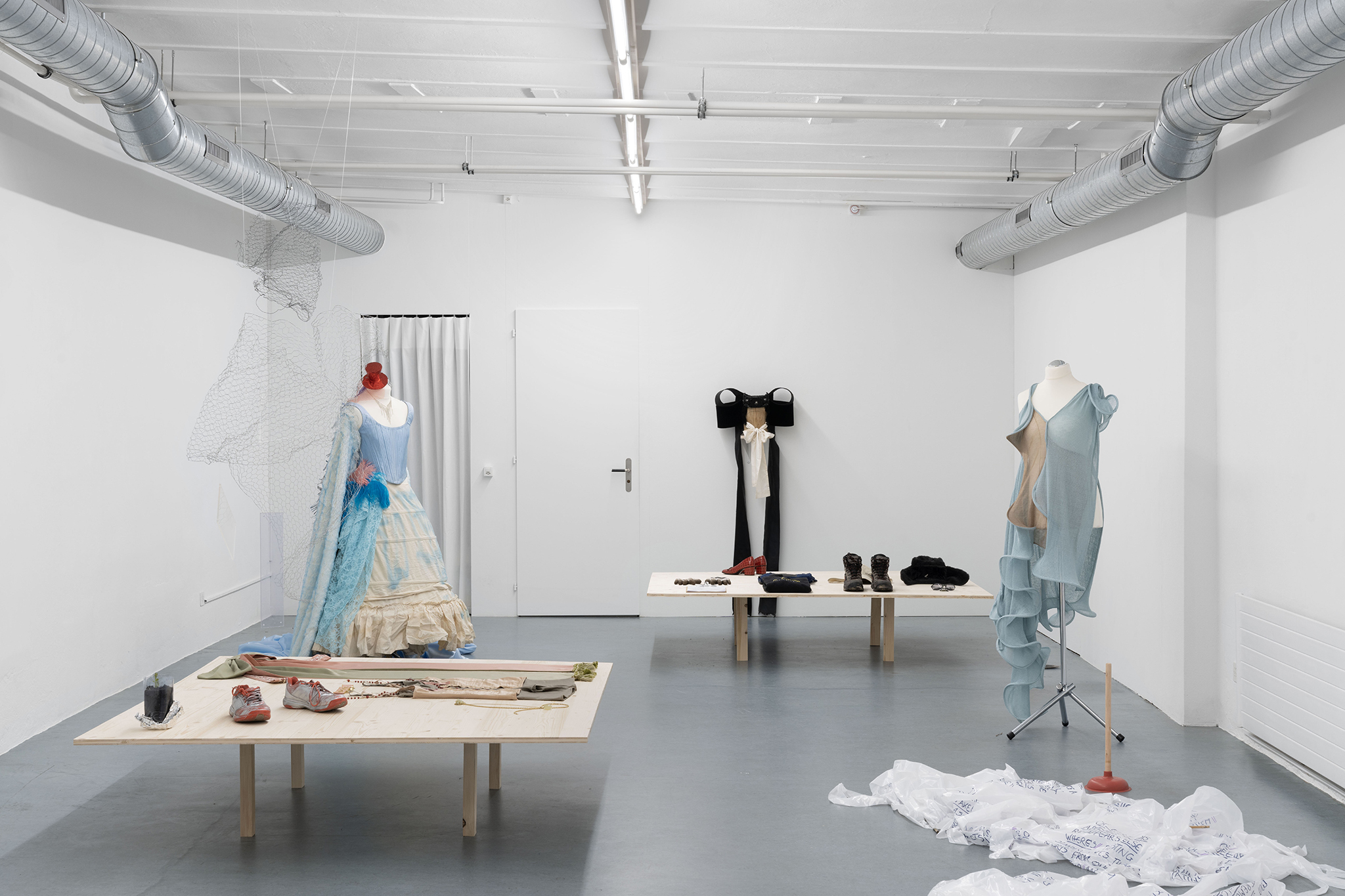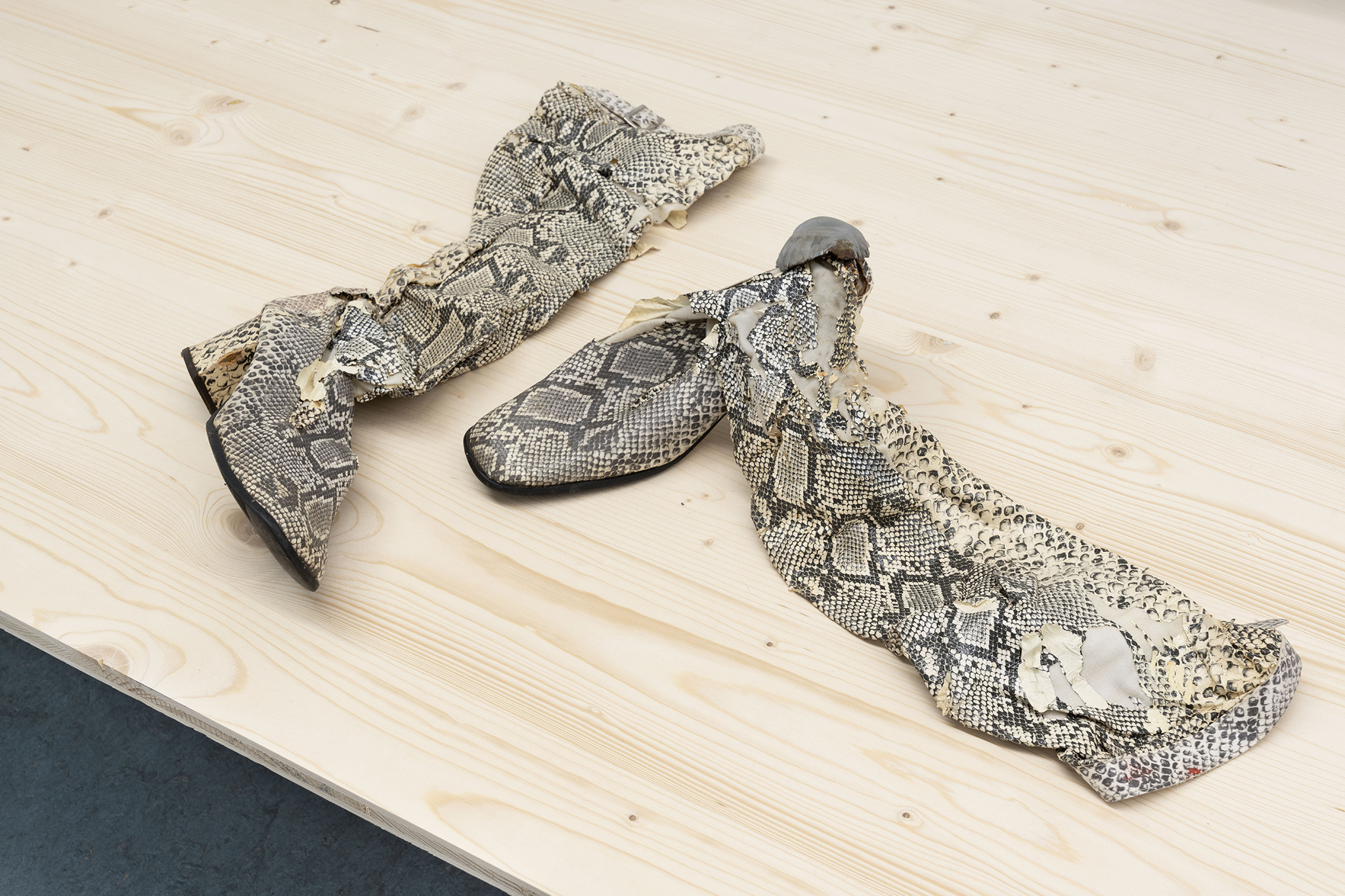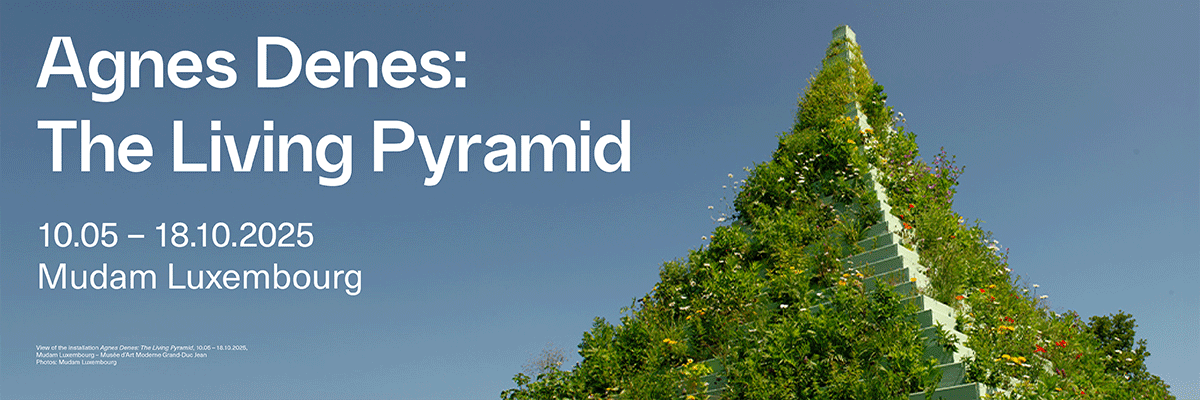
Luciano Castelli, Lara Dâmaso, Barnaby Horn, Nils Amadeus Lange, Eva Maspoli, Martina Morger, Pipilotti Rist, Davide-Christelle Sanvee, Silvia Ziranek
What Performance Artists Wear

Exhibition view, all photos by Elvira Bättig and Jack Pryce
Advertisement

Exhibition view «What Performance Artists Wear»

Exhibition view «What Performance Artists Wear»

Barnaby Horn, Muscles for Silence, 2023, cotton, polyester, embroidery, a collaboration with Oscar Cheung

Barnaby Horn, How to Read Clouds, 2023, melusine fur felt, acid dye, embroidery

Luciano Castelli, one pair of knee-high boots worn during various GEILE TIERE concerts in Europe ca 1981/82

Silvia Ziranek, various button-up shirts worn in NOT UNDIRTY performed during the opening at marytwo

Silvia Ziranek, plastic aprons with text leftover from NOT UNDIRTY performed during the opening with Yma Ziranek Wilson at marytwo

Silvia Ziranek performing NOT UNDIRTY during the opening with Yma Ziranek Wilson at marytwo, photo by Livio Burtscher

Eva Maspoli, chainwire fencing costume and mask, plexiglass, silver spray painted shoes and potato plant, worn in WACHSEN LASSEN during Act Performance Festival, Geneva, 2023

Exhibition view «What Performance Artists Wear»

Davide-Christelle Sanvee, spandex bodysuit, bow, jewellery, styled by Doria Gomez Rosay, worn in the video work TOURBILLON QUOIQU’IL ARRIVE, 2020

Lara Dâmaso, dress made by Vitelli in 2x1 fine gauge ribbed linen with outlines shaped by “boning” and a sheer front panel in tulle, worn in GRAVITY AND GRACE performed at the Move Festival, Centre Pompidou, Paris, 2023

Exhibition view «What Performance Artists Wear»

Martina Morger, workwear, accessories and tools, worn in FOSSILS – LAYERS OF INTIMACIES performed at Kunstmuseum Appenzell, 2022

Pipilotti Rist, one pair of red heeled shoes by Vera Pelle, worn in the video work EVER IS OVER ALL, 1997

Exhibition view «What Performance Artists Wear»

Nils Amadeus Lange, 19th century headpiece, worn in the play HILDEGARD VON BINGEN performed at Arsenic in Lausanne, Orangerie Theater in Cologne, CCN in Rennes, 2023

Nils Amadeus Lange, various fabrics draped over male dress form, Frederic Malle (Promise) perfume, vintage Helmut Lang high heels, worn in SKULPTURENGRUPPEN performed at Secession Vienna, 2022, among others

Nils Amadeus Lange, various fabrics draped over male dress form, Frederic Malle (Promise) perfume, vintage Helmut Lang high heels, worn in SKULPTURENGRUPPEN performed at Secession Vienna, 2022, among others
«Vain trifles as they seem, clothes have, they say, more important offices than merely to keep us warm. They change our view of the world and the world’s view of us.»
Woolf, Virginia. Orlando, 1928
Clothes are the closest things we wear to skin. They can be a shell, a shelter, or some kind of bodily extension that forms a certain image in the eyes of others. Through them, we can invent personalities, stories and identities. Orlando, the main character in Virginia Woolf’s eponym early queer novel, evolves across centuries and norms, in a temporal framework in which they vacillate between genre identities. In this liminality, the multiplicity of clothing plays a decisive role within the narrative. It seems to impact or at least reflect Orlando’s interiority in the various stages of their story, accompanying the complex fluidity of their person. Much more than “vain trifles” and accessories remaining on the surface of the skin, these objects are an open window into their bodily metamorphoses.
When thinking about performance art as an artistic medium, the first words that come to mind are liveness and ephemerality. And then there’s the eternal question: what remains after a performance? Is it the echo of the bodies’ presence in our memory, the documentation photographs, the traces on the floor of the space, the smells, the emotions? The exhibition What Performance Artists Wear at marytwo chooses to focus on one aspect that seems to occupy a marginal place in the history of art: the garments and ornaments worn during performative events.
A certain history of performance art argues that it has developed through constant transgression, through criticism of the exclusivity of the museum or gallery, or opposition to the commercial motor of the art world. The transgression would always be defined by its essential ephemerality. Questions of documentation, archiving and the musealization of performance are still at the heart of theoretical and practical debates, and different schools of thought still start from an ontology of liveness. By moving away from the reign of liveness and looking closer at the performative body, the temporality that costumes occupy can allow for an interesting shift away from the question of the “after”.
Perhaps the most important transgression that performance enables concerns the norms assigned to the body in social and ideological spaces. And if the body is often clothed, the costume plays a central role in this history as a liminal object. It allows an event to resonate in its materiality and thus places the performance beyond the live, telling something about the skin it has hidden or will reveal. Much more than an archive, it is the incarnation of a personae developed for a piece. As an object of metamorphosis, it contains transformation, movement and fluidity, without reducing them.
The exhibition space is imagined here as a stage without curtains, on which slumbering costumes rest like a constellation of different generations of artists and different events. The costume is present as an iconic object, as are the red shoes of Pipilotti Rist’s Ever is over all, a work that inspired Beyoncé’s famous music video “Hold Up”. It is also a transgressive object, as in Barnaby Horn’s headpieces or Luciano Castelli’s work, both of which question gender roles. The objects on display are sometimes self-made – as with Eva Maspoli – or the result of collaboration between artists and designers, as with Lara Dâmaso and Vitelli. In the work of Davide-Christelle Sanvee, a bodysuit, a robe and jewellery enable the embodiment of a historical figure. Most of the exhibited costumes are to be understood as processual objects: Nils Amadeus Lange’s pieces have evolved through their various appearances, in Martina Morger’s work, clothes bear witness to the various steps of a past action, and for Silvia Ziranek, pieces of costumes only appear in the space for the first time on the opening night with the work NOT UNDIRTY, performed together with her daughter Yma Ziranek Wilson. All of these costumes carry the theatricality and performativity of the self in their knots, stitches and assemblages. If you look closely, the shells may seem far from empty.
Monica Unser




